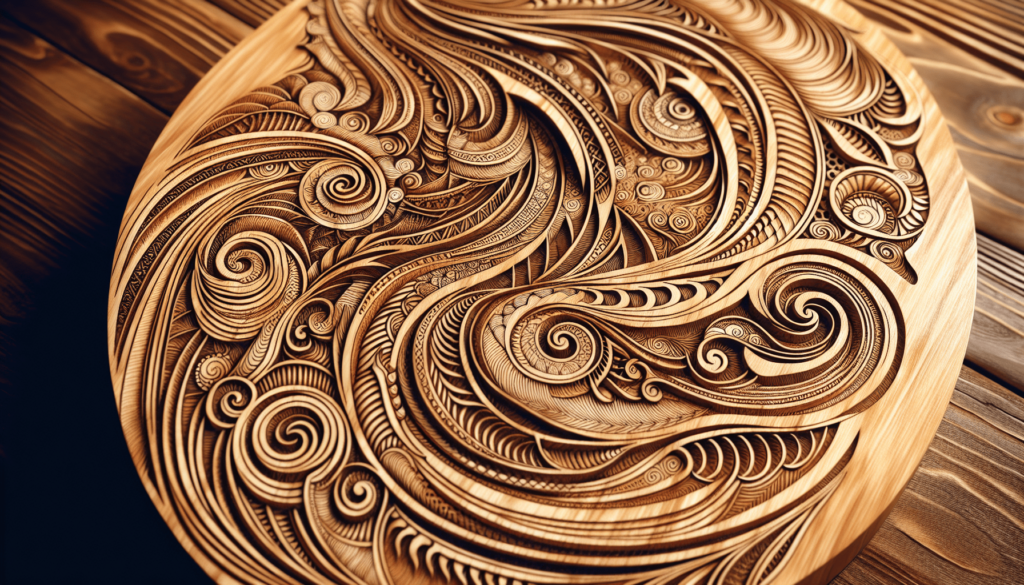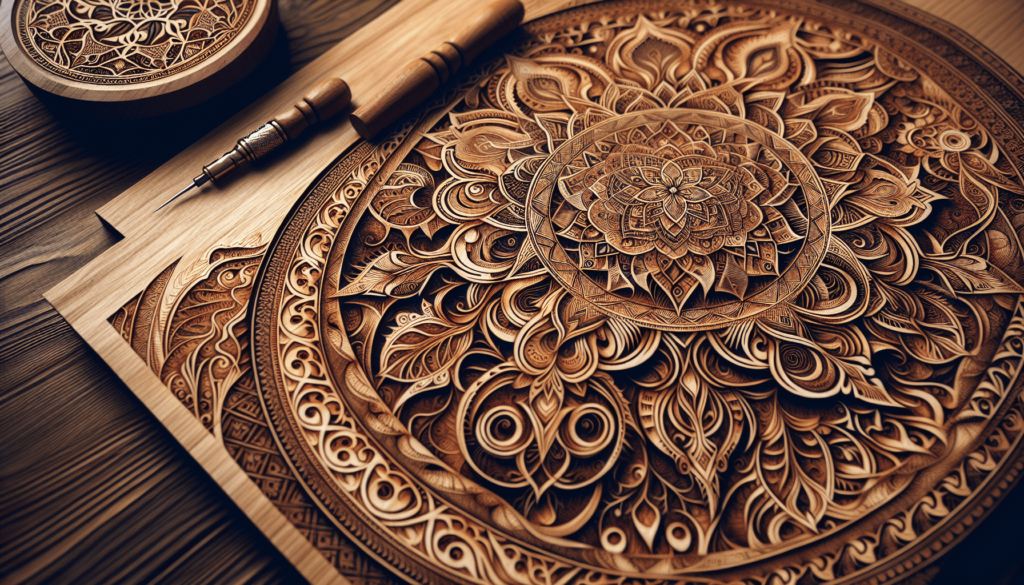What is pyrography, and what’s the best word to describe it? Now, that’s a solid conversation starter. Imagine introducing yourself to someone at a party and casually bringing up pyrography. They might look at you like you sprouted another head—a fabulous, wood-burned head, but still. So, what is this enchanting art form, and more intriguingly, what’s the best word to describe it?

Understanding Pyrography: An Intimate Dance with Fire
Pyrography, also known as “wood burning,” is the art or craft of decorating wood or other materials with burn marks resulting from the controlled application of a heated object. Esteemed as much as painting or sculpting, it’s one of those forms of artistic expression that captivates the imagination. The word itself—’pyrography’—breaks down to the Greek roots “pur” (fire) and “graphos” (writing), which is a pretty straightforward descriptor when you come to think of it.
The Origin and Evolution of Pyrography
Let’s turn on the time machine for a quick history lesson. Pyrography dates back to ancient times, with evidence of this craft in Egypt, China, and Peru. Early artists would use heated sticks or pokers to create designs on wood, leather, or gourds. Fast forward to the Victorian era, and you’ll see pyrography taking a splendid leap in popularity. Back then, artists used specially-designed pyrography kits heated by a lamp. Quite steampunk, if you ask me.
The Modern Pyrographer: Tools of the Trade
Today, we’ve traded the ancient hot pokers for more sophisticated tools. Modern pyrographers use electric wood-burning tools that allow for meticulous control over temperature and detail. This shift from rudimentary instruments to precision tools has transformed the level of artistry one can achieve in pyrography. Some of these contemporary tools include:
| Tool Name | Description |
|---|---|
| Basic Wood Burner | A simple tool with a fixed temperature, suitable for beginners. |
| Variable Temperature Wood Burner | Allows for temperature adjustments, accommodating more detailed work. |
| Pyrography Pen | Often comes with replaceable tips, designed for intricate designs and finer details. |
The Artistic Merit of Pyrography
Let’s not kid ourselves—pyrography is genuinely mesmerizing. Not only does it require a steadiness of hand and precision, but it also demands a deep understanding of shading, textures, and the burn nuances that create depth and dimension. Much like a painter with a brush, a pyrographer wields a burning tool to craft stories on a wooden canvas.
The Elements of Pyrography
When you’re staring at a piece of pyrography, you’re not just looking at burn marks; you’re witnessing a blend of artistic elements. Consider things like:
- Lines: These are the straightforward paths the burner creates, forming outlines or defining boundaries.
- Shading: Variations in burn depth and color to create a sense of light and shadow.
- Texture: The tactile surface of the work, achieved through controlled variations in burning techniques.
- Composition: The overall arrangement of elements in the artwork.
Why “Pyrography” May Not Cut It
Now, you might be wondering why, if “pyrography” does such a bang-up job describing the art itself, we’re even questioning it. Truth be told, “pyrography” can come off as a bit academic and … well, distant. It doesn’t quite roll off the tongue with the same ease or carry the instant understanding you might find with simpler terms. Think about how words like “photography” or “painting” immediately conjure images; “pyrography” seems to require an additional layer of explanation. It’s like having a fantastic joke but needing to explain the punchline—kind of dilutes the magic, doesn’t it?
Alternatives to the Term “Pyrography”: A Few Considerations
What if we could find a term that both encapsulates the beauty and the fire-rich technique, yet gives off an immediacy that promises intrigue without a side of confusion? Here, I scoured a few options.
Wood Burning
If it ain’t broke, don’t fix it, right? “Wood burning” speaks plainly. It might lack the pizzazz of “pyrography,” but it makes up for it in straightforward clarity. When you say “wood burning,” the mental image is immediate: fire, wood, art. No assembly required.
Fire Art
This one sounds pretty cool—no pun intended. “Fire Art” brings to mind a more dramatic flair, invoking the passionate and almost primal appeal of fire. It’s beautifully evocative, isn’t it? However, it skirts a bit on the ambiguous side. Are we talking literal fire dances? Sculptures made of flames? Without context, it might sail into confusing territories.
Burn Art
Sticking with the idea of simplicity, how about “Burn Art”? It’s short and descriptive, carrying a sense of artistry tied directly to the act of burning. The downside? It might come off a bit too raw—almost like naming a baby “Child.” There’s an edge of harshness there, even if it’s brutally straightforward.
What Makes a Term “The Best”?
Terms are like shoes—they need to fit perfectly while serving a purpose. What makes a term “the best” for describing an art form like pyrography? I’d argue it boils down to a few key factors:
Clarity
A good term should immediately communicate what it represents. “Wood burning” gets this right because even someone who has never seen pyrography can get a pretty good idea of what’s involved.
Evocativeness
Great, now I sound like an SAT prep book. But you get my point—a term should paint a picture. Words like “Fire Art” do this tantalizingly well, encapsulating the passion and energy inherent in the process.
Ease of Use
If you have to explain the term every single time you use it, it probably isn’t working. “Pyrography” is beautiful in its own right but often demands an encore of explanation.

Pearls Turned to Ashes: Misconceptions and Mistakes
Before we settle into a cozy conclusion, it’s worth noting some of the misconceptions surrounding pyrography that might color our terminology quest. I remember thinking it was akin to playing with fire—which, in a way, it is—but not in that wanton, “let’s-start-a-bonfire-in-the-living-room” sort of manner.
Misconception #1: It’s Just Burning Stuff
Oh, how I wish I could cheat on my taxes with that level of simplicity. Pyrography isn’t about randomly scorching wood. It’s a meticulous, controlled process that requires an understanding of heat levels, time, and the unique qualities of different woods.
Misconception #2: It’s Easy
Ever tried to create a masterpiece using a red-hot tool on a piece of wood? It’s like trying to paint with a brush that’s about forty degrees too warm and capable of burning through your canvas. Pyrography takes time, patience, practice, and an eye for detail.
Misconception #3: It’s Outdated
You might think pyrography is an ancient art form with no place in our glittering digital age. False again. Modern pyrography artists are constantly pushing boundaries, incorporating mixed media and innovative techniques, making this an ever-evolving field.
Conclusion: What’s the Best Word?
After mulling over the options like a sommelier swishing a fine vintage in search of nuanced flavors, I think the answer inevitably circles back to our seasoned term. The rich history, the detailed description, and the wave of nostalgia—the term “Pyrography” might still hold its deserved seat at our linguistic table.
But here’s the thing: the beauty of language and art isn’t in the rigidity but in the evolution. While “pyrography” continues to stand tall, there’s ample room for new, evocative terms to bubble up through the creative woodwork. Whether you’re leading the charge with “Fire Art” or grounding your work in the earthy simplicity of “Wood Burning,” the essence lies in keeping the art—and its beautifully hot description—alive and kicking.
So the next time someone questions, “What is the best word for pyrography?” you’ll have a palette of terms to choose from, each uniquely seared with its own charm and clarity.

